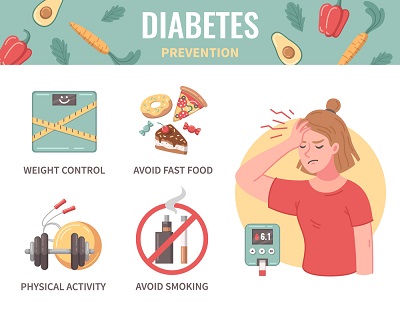Lifestyle Choices for Diabetics
 Diabetes isn’t a disease that just turns on like a switch when you come down with it. Its onset is a gradual process that hovers near the point of diabetes before you actually get the disease. The process that happens right before you get diabetes is called prediabetes. It can last for years until the diagnosis of diabetes is finally made.
Diabetes isn’t a disease that just turns on like a switch when you come down with it. Its onset is a gradual process that hovers near the point of diabetes before you actually get the disease. The process that happens right before you get diabetes is called prediabetes. It can last for years until the diagnosis of diabetes is finally made.
Doctors diagnose prediabetes when the fasting blood sugar is between 100 mg/dL and 125 mg/dL. It means you are likely developing insulin resistance; insulin is less able to allow glucose to enter the cells to be used as fuel. As your diet remains poor and your weight perhaps goes up, you are finally diagnosed as having diabetes or a fasting blood sugar of greater than 125 mg/dL and non-fasting blood sugars in the range of 160-200 mg/dL or more.
The time of pre-diabetes is perhaps the best time to make dietary changes to prevent diabetes from ever happening. This is the time to take a hard look at your diet and commit to lifetime changes. Continue reading
 With the diagnosis of type 2 diabetes, come many questions.
With the diagnosis of type 2 diabetes, come many questions.
What can I eat as a diabetic?
Do I have to lose weight?
Are there things I have to avoid now that I’m diabetic?
The answers to all these questions can easily be obtained from a nutritionist, perhaps even more so than you can get them from your primary doctor. This is why doctors routinely advise new diabetic patients to see a nutritionist to gain valuable information about how they can help themselves and their condition through nutrition.
Type 2 diabetes is a disease that is best controlled with diet and exercise. Making healthy changes to lifestyle choices helps to manage the disease and prevent many of the complications associated with it, including, heart disease, stroke, hypertension, diabetic neuropathy, and premature death that can result from out of control blood sugars and complications. Continue reading






